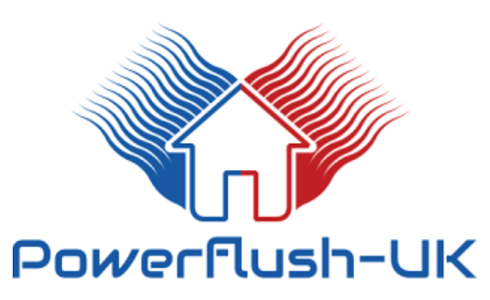FAQ's
Why do I need a powerflush?Over time the inside of the radiators, pumps, valves and the boiler degrade and rust causing sludge and debris to build up in your heating system.This debris can: - Block up the heating pipes preventing the water circulating around your radiators.
- Damage the pump, valves and motors in the boiler / heating system
- Cause gas to build up in the system
- Cause cold spots in the radiators
- Cause noisy and banging pipes
- Cause blockages inside your boiler
- Prevent your heating system from working
Prevention is always better than cure and a well maintained system should be cleaned regularly to prevent excessive sludge build up. Powerflushing is the best way to clean your heating system.
- Block up the heating pipes preventing the water circulating around your radiators.
- Damage the pump, valves and motors in the boiler / heating system
- Cause gas to build up in the system
- Cause cold spots in the radiators
- Cause noisy and banging pipes
- Cause blockages inside your boiler
- Prevent your heating system from working
Why use Powerflush-UK?
We are the Experts!
- We specialise in powerflushing
- We have been offering power flushing services for over 10 years!
- Powerflush-UK invests in the best flushing machines on the market.
- Powerflush-UK invests in thermal camera technology to be able to "see" the heat travelling around your system.
- We carry out hundreds of power flushes every year
- Our power flushing team are fully qualified and experienced
- We hold £5 million public liability insurance
How long will it take?
Most systems can be flushed in a day.
Powerflushing is a process which removes debris and sludge from the system. How long it takes varies according to the size of the system, how dirty the system is and how well the existing heating system has been installed. It takes between half a day (6 radiators) and a day (24 radiators) to perform a complete flush.
My service plan provider has told me I need a powerflush - will yours be acceptable?
Yes.
We are expert powerflush specialists using the best machines, magnetic filters and chemicals on the market. We use thermal imaging to ensure you get the best powerflush. We will analyse your heating system and provide a certificate showing Total Dissolved Solids (TDS), turbidity and PH of your system on completion.
To ensure that the flush is as effective as possible please ensure that any known faults in your heating system are resolved prior to the flush being carried out - ie all your radiator valves should be in good working order prior to flushing.
I have an old system can the high pressure cause a leak?
No.
We have been power flushing for over a decade and we have never had a leak caused by a power flush. Powerflushing machines are designed so that there is no increase in pressure in your system. It is a high flow rate that makes power flushing effective, not high pressure. Occasionally systems may have radiators with localised deep corrosion pits, with only a scab of rust preventing the system water from leaking out. The vigorous flow rate required to remove sludge and deposits may dislodge the scab, leading to a leak from the radiator.
The advanced stage of corrosion required for such a situation means that the leak would occur imminently even without a power flush. If the problem is revealed by the flushing process, it is better that it occurs whilst a an engineer is present to remedy the problem, preventing an emergency leak.
Can a microbore heating system be power flushed?
Yes.
WE CAN powerflush most microbore systems, but it is wise to allow more time than normal for the flush. Our power flushing machine can flush microbore systems with 8 or 10mm tubing and will produce a far more effective clean than any alternative method.
However if the radiators have twin entry valves (both valves at one end of the radiator) it is a good idea to change them to conventional radiator valves (please mention at the time of booking so we can provide a quotation).
Conventional valves will ensure the powerflushing will be more effective, and the householder will gain more even heat output as a side benefit.
Can pressure from a power flushing pump damage the boiler or heating system?
No.
For safety reasons the internals (water group) of a boiler have to be tested by the manufacturer to withstand at least 4.5 bar. A powerflushing machine does not increase the pressure in the system it works using high flow rates and therefore won’t over-pressurise and damage the internals of a boiler.
Powerflushing is a cleaning process - cleaning the inside of the radiators, pipework, pumps and valves cannot break them.
Isn’t it enough to just fit a magnetic filter to the heating system on the return to the boiler?
No - (Unless the system is brand new)
Whilst a permanent system filter is a good idea, and we would definitely recommend all systems have a filter it can only remove debris from the water passing through it, invariably leaving debris elsewhere in the system.
Most permanent filters have a limited capacity and the debris in many existing systems would overwhelm their capacity and a blocked filter will actually reduce the effectiveness of the heating or even stop the heating system working completely.
Relying on the standard heating pump to remove corrosion debris is a triumph of hope over experience as it can never be as effective as the much higher flow rate of a power flushing pump.
Will my heating system be better after being flushed?
Yes.
Cleaning your heating system will remove harmful sludge and debris that damage the boiler, pumps, valves and cause blockages.
Your heating system needs to be repaired and maintained on a regular basis to keep it working well.
A sludgy system will shorten the life of the boiler, pump, valves and other parts and can invalidate manufacturer guarantees / warranty.
Immediately after the powerflush, when the system is thoroughly clean is the best time to install new parts and carry out routine maintenance.
It may be possible to arrange for additional work to be carried out in conjunction with the powerflush including:
Installing a magnetic system filter
Replacing the heating pump
Replacing 3 port valve
Replacing radiators valves
Replacing radiators
Boiler servicing
Boiler replacement
If you require any additional services please ask at the time of booking for prices and availability.
My heating no longer works properly due to sludge - will a powerflush fix my heating system?
Yes - If the only problem with your heating system is sludge in the system, removing the sludge will resolve the issue.
However, sludge builds up slowly over time, so if your heating system has been gradually deteriorating over a period of time it may well have damaged the boiler, pump, valves and other components significantly enough that they also need replacing to restore the system to working order.
Once pipework becomes restricted by sludge complete blockages are more likely and completely blocked solidified pipework without water flow cannot be cleared by powerflushing alone and it may be necessary to chop out the blocked sections and replace them.
If your heating system has got to the point it no longer works, power flushing is likely to be the first step in the repair process.
How often should a heating system need to be power flushed?
When you replace the boiler or every 10 -15 years.
As with most things - prevention is always better than cure.
Don’t wait until your heating system is failing to clean it!
Keep your heating system clean and carry out regular maintenance and repairs of the heating system and your boiler and other components will last longer, which will not only save you money on repairs and replacements and prevent breakdowns, but an efficient heating system could save you money on your energy bills too.
We recommend a well installed heating system should be flushed approximately every 10 to 15 years and the water tested and inhibitor checked annually to ensure sludge is removed before it becomes problematic.
Boiler and heating system product manufacturers recommend that heating systems are thoroughly flushed prior to installing new appliances or components and exclude sludge damage from their warranties. A system flush is required to meet building regulations when replacing your boiler.
Power flushing cannot cause problems in your heating system, because it is purely a cleaning process that removes sludge and it is carried out at low pressure so doesn’t put stress or pressure on any part of the heating system.
There is no negative to giving your system a good clean and ensuring the inhibitor levels are topped up to protect the system from corrosion and good maintenance will prolong the life of your boiler and heating system.
How will I know the flush has worked?
We will analyse your system and take thermal images before and after the powerflush.
In most cases you will be able to feel the difference straight away - because your radiators will be hotter and your home will feel cosy and warm.
However, if there are other issues in the system that still need to be resolved you may not feel the true benefit until these have been resolved.
When we arrive at your property to carry out the powerflush we will test the water in the heating system and measure the Ph and Total Dissolved Solids(TDS). This test shows us how clean the water in your system is. It records the amount of solids dissolved in water (ie sludge and debris) in parts per million (ppm);
1 ppm indicates 1 milligram of dissolved solids per kilogram of water.
We compare the readings of the water in your heating system to the reading from the drinking water coming in at the mains. The system can be regarded as being thoroughly flushed if the readings are within 10% of each other.
We use thermal imaging to highlight problem areas and these images will show the improvement in your system after the powerflush.
We will issue a certificate to confirm this information.
Will it be messy?
No.
Powerflushing is a specialist cleaning process which uses a powerflush machine to wash the inside of the pipework and radiators.
It is used on domestic heating systems and is generally considered to be the most effective type of heating system flush for removing the sludge and debris that can build up inside the heating system, with minimum mess and disruption and without the need to remove each radiator or replace pipework.
The process is confined to your current heating system. We just need to connect our power flush machine to the flow and return pipework of your heating system at a convenient point (usually done by removing the heating pump, system filter or radiator) and we'll use a suitable drain to dispose of the waste water.
The machine then cleans the entire system using the pumps built inside the machine to pump cleaning chemicals and fresh clean water around the heating system at high flow rates to flush out the sludge and debris. Strong magnets inside the machine trap the magnetic particles, removing them from the system, as they pass through the machine.
The powerflush machine flushes in both directions around the system to dislodge as much debris as possible and our operative will use the radiator valves on your system to focus the flush on each radiator individually.
I have non-barrier pipe, can this be powerflushed?
Yes.
What is included with my powerflush?
Analysis, cleaning chemicals, thermal imaging, inhibitor, report and certificate
What is sludge and why is it in my heating system?
Sludge is iron oxide and dirt in the system, caused by chemical reactions as the metal in your radiators/ components corrode
Sludge usually builds up slowly over months and years and if left untreated can damage your heating system.
If sludge has built up inside your heating system it is likely to be due to one of the following reasons:
Lack of or insufficient regular maintenance (ie no inhibitor)
Poorly designed/installed heating system ie:
- Pumps that drag air into the system
- Faulty / damaged parts
- Leaks
- Non barrier pipe
A well designed, correctly installed and properly maintained heating system should not suffer from problematic sludge.







